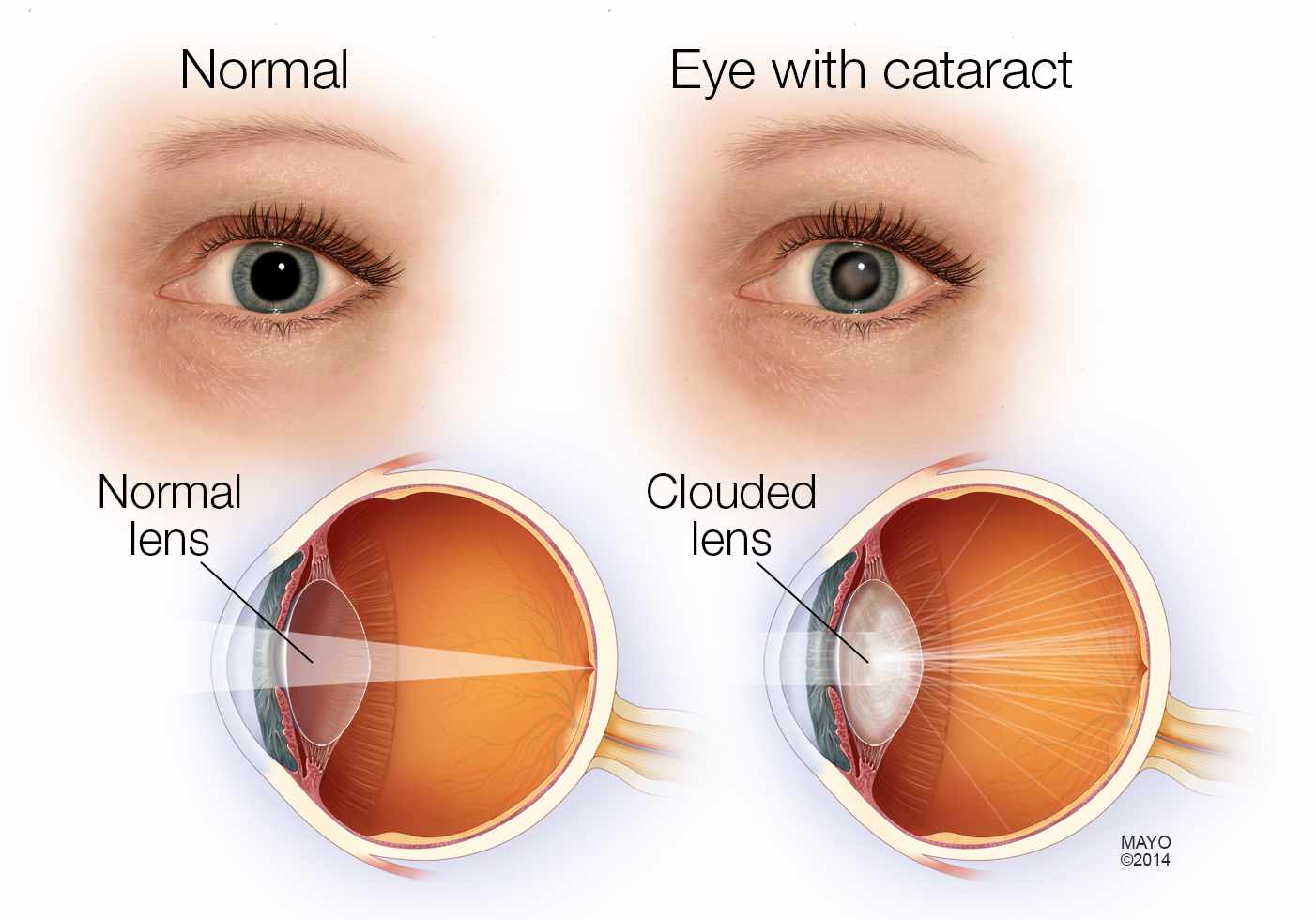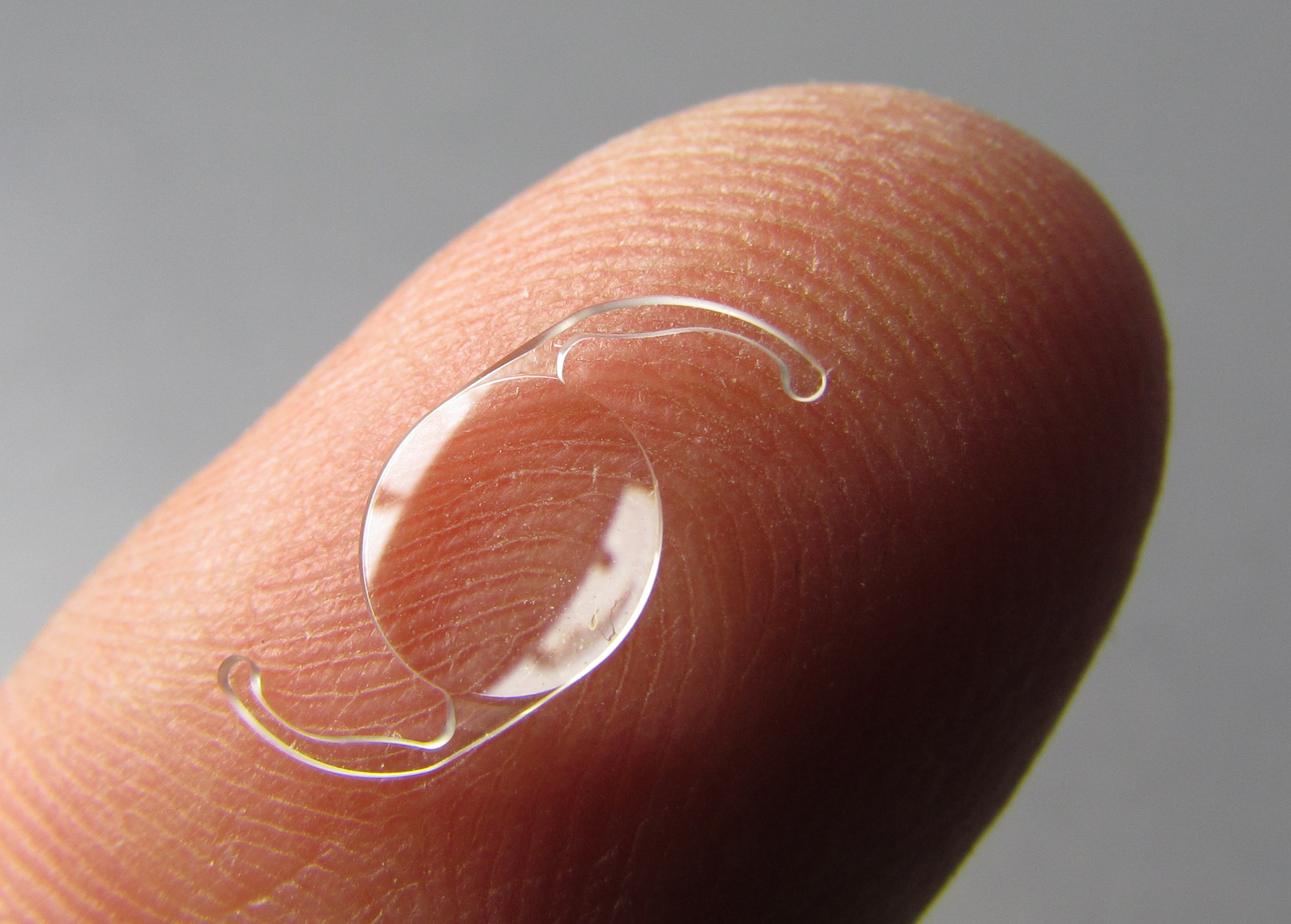-
Appointment
+91-9819186640 -
Email
specialityeyeclinic@gmail.com -
Monday - Saturday
11.00 am to 07.30 pm
Cataract is clouding of human crystalline eye lens
which is normally clear & transparent.
This blocks the light rays from passing through the lens &
blurs the vision. The patient feels like as if he is looking
through a frosted / fogged glass. As the cataract
progresses, the vision blurs further & eventually there is
complete loss of vision.
Slow, painless and progressive blurring of vision is the hallmark of a cataract. Images are yellow, hazy and blurred. Sometimes it may cause double or multiple images. All these symptoms are not correctable by change in glasses. Also there may be increased glare, haloes at night time. Some people may notice an Improvement in their near vision or a frequent change in their glasses prescription.

It is an ageing process. Everyone will experience a cataract in their lifetime. Only the age at which a cataract strikes varies in individuals. It usually sets in around 60 years but in certain individuals it can happen early in life. Other causes of early cataract are Diabetes Eye Injury. Use of certain medications like steroids, Infection or Inflammation inside the eye. Cataract can sometimes be a congenital defect in children.

With all the advances in technology, Cataract is removed through a tiny 2.2 mm microincision with ultrasonic energy The eye recovers rapidly within 2-3 days and patient can resurne his work schedule in quick time. The patient notices an improved vision almost immediately after the procedure.
Cataract surgery is one of the safest surgeries performed the world over. However somme minor complications like slight drooping of lid, lid swelling. comeal haze, glare, floaters (black spots) are temporary and recover with healing & medications Chances of serious complications like infection, inflammation, retinal detachment & nucleus drop are negligible.
When cataract is removed during surgery
Surgeon replaces the natural lens with an
Intraoculariens (IOL) .
A variety of IOUS including Non-Foldable.
Foldable & Premium lenses like Aspheric, Toric.
Multifocal, Extended range of vision & Microphoco
Intraocular lenses are now available to improve quality
of vision offer Cataract Surgery.
Foldable lenses are made up of Acrylic & can be
injected through a micro incision. Because of the tiny
incision size, no stitches are required This helps in
foster healing, less chances of infections & losser
chances of post operative astigmatism (Cylindrical
numbers) & call this translates into an enhanced quality of vision.
Hydrophobic Acrylic IOL's have an edge over
Hydrophilic Acrylic IOL with respect to the lens material.
This translates into superlative vision with lesser chances
of capsular thickening

Vision with a Non-Aspheric lens
Improved contrast, low light vision
& night vision due to Aspheric IOL
Conventional or non aspheric lenses impart images
which are not as sharp as they could be, which means
the patient will have vision of an older person rather than
that of a healthy younger person.
Aspheric lenses or aberration free lenses are surface
modified to improve image quality, brightness & overall
contrast Because of its wavefront design they provide
excellent night vision & low light vision e.g. walking in a
fog or dining by candlelight. It also enables faster
reaction time when driving at night.
Aspheric lenses which are negatively aberrated also
improve depth perception.

In a healthy human eye, comea is round in shape like a
basketball In eyes with astigmatism (cylindrical
numbers) the cornea is asymmetrical & shaped more
like an egg When light passes through a corea with
astigmatism the image does not focus sharply on the
retina causing blurred vision.
Toric lenses are designed to correct the astigmatisrn so
as to minimise the need for corrective lenses after
surgery.


© 2021 All Rights Reserved www.specialityeyecare.com | Powered by : A-WEBSOLUTIONS